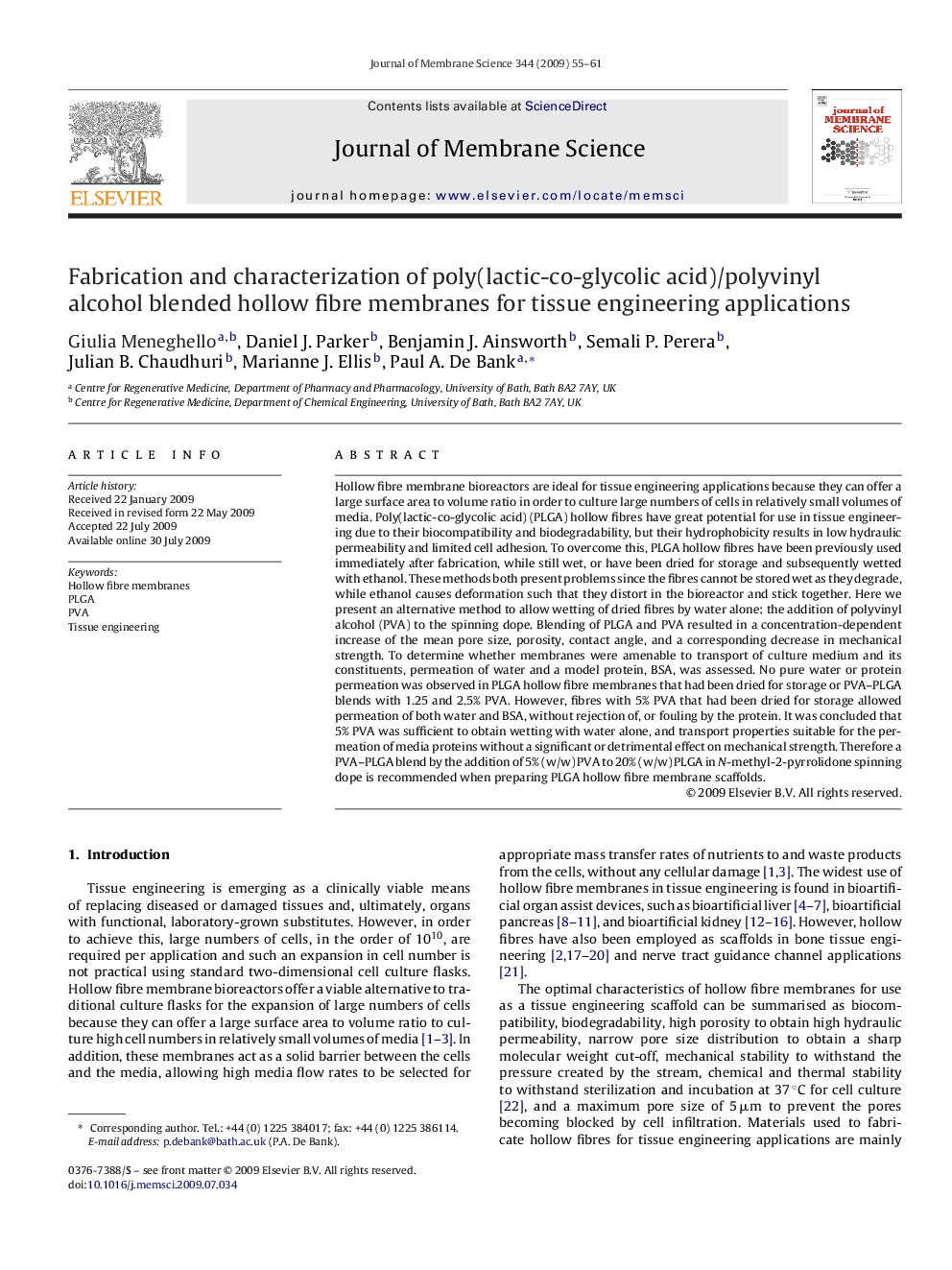| کد مقاله | کد نشریه | سال انتشار | مقاله انگلیسی | نسخه تمام متن |
|---|---|---|---|---|
| 636725 | 1456134 | 2009 | 7 صفحه PDF | دانلود رایگان |

Hollow fibre membrane bioreactors are ideal for tissue engineering applications because they can offer a large surface area to volume ratio in order to culture large numbers of cells in relatively small volumes of media. Poly(lactic-co-glycolic acid) (PLGA) hollow fibres have great potential for use in tissue engineering due to their biocompatibility and biodegradability, but their hydrophobicity results in low hydraulic permeability and limited cell adhesion. To overcome this, PLGA hollow fibres have been previously used immediately after fabrication, while still wet, or have been dried for storage and subsequently wetted with ethanol. These methods both present problems since the fibres cannot be stored wet as they degrade, while ethanol causes deformation such that they distort in the bioreactor and stick together. Here we present an alternative method to allow wetting of dried fibres by water alone: the addition of polyvinyl alcohol (PVA) to the spinning dope. Blending of PLGA and PVA resulted in a concentration-dependent increase of the mean pore size, porosity, contact angle, and a corresponding decrease in mechanical strength. To determine whether membranes were amenable to transport of culture medium and its constituents, permeation of water and a model protein, BSA, was assessed. No pure water or protein permeation was observed in PLGA hollow fibre membranes that had been dried for storage or PVA–PLGA blends with 1.25 and 2.5% PVA. However, fibres with 5% PVA that had been dried for storage allowed permeation of both water and BSA, without rejection of, or fouling by the protein. It was concluded that 5% PVA was sufficient to obtain wetting with water alone, and transport properties suitable for the permeation of media proteins without a significant or detrimental effect on mechanical strength. Therefore a PVA–PLGA blend by the addition of 5% (w/w) PVA to 20% (w/w) PLGA in N-methyl-2-pyrrolidone spinning dope is recommended when preparing PLGA hollow fibre membrane scaffolds.
Journal: Journal of Membrane Science - Volume 344, Issues 1–2, 15 November 2009, Pages 55–61